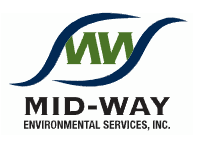Mid-Way Environmental Services is a leading environmental service company that provides water and wastewater disposal services for industrial and manufacturing facilities across various industries. They have provided a detailed picture of how the manufacture and use of certain per- and polyfluorinated substances (PFAS) are presently regulated in the United States.
“Under the Toxic Chemicals Control Act (TSCA), the EPA has urged the phase-out of PFOA (perfluorooctane sulfonic acid) and PFOS (perfluorooctane sulfonate), says the spokesperson for Mid-Way Environmental Services. “They have used the Substantial New Use Rules (SNUR) to restrict the manufacture and use of certain per- and polyfluorinated substances (PFAS). The Federal Government plans to regulate PFAS under its February 2019 Action Plan.”
The EPA has issued health advisory levels (HALs) for PFOA and PFOS in drinking water under the Safe Drinking Water Act (SDWA). However, the maximum contamination limits (MCLs) for these and other PFAs are not yet established.
Under the Comprehensive Environmental Response, Compensation, and Liability Act (CERCLA), PFAS are not explicitly regulated as hazardous substances or hazardous wastes under the Resource Conservation and Recovery Act (RCRA). However, they come under the general category of pollutants or contaminants.
The regulation of PFAS varies from one state to another.
In Texas, PFAS in the environment falls under the definition of solid waste and might be regulated under the state's Superfund and industrial solid waste programs.
In the past, PFAS had not been the subject of protective concentration levels or PCLs under the Texas Risk Reduction Program (TRRP). This created significant issues for those seeking to remediate them under TRRP. Now, there are PCEs for several PFAS.
The federal government plans to regulate PFAS under its February 14, 2019, Action Plan. This is how they will regulate the process:
- Drinking Water – The EPA will proceed with the MCL process for PFOA and PFOS. They will examine the necessity of regulation for a broader class of PFAS.
- Cleaning – The EPA intends to strengthen enforcement authorities and clarify cleanup processes by classifying PFOA and PFOS as dangerous substances and developing interim guidelines for groundwater cleanup.
- Toxics – The EPA is considering the addition of PFAS chemicals to the Toxics Release Inventory (TRI). This follows the Emergency Planning and Community Right to Know Act and the rule prohibiting the use of some PFAS compounds.
- Monitoring – The EPA plans to propose nationwide monitoring for PFAS in drinking water as part of the following monitoring cycle for the Unregulated Contaminant Monitoring Rule.
- Research – The EPA is expanding the scientific basis for understanding and quickly managing PFAS risk.
- Risk Communication – The EPA intends to develop a risk communication toolkit. It will have multimedia materials and messaging for federal, state, tribal, and local partners to use with the general public.
These are the steps the companies must take to mitigate and avoid legal risks associated with the manufacture, use, and presence of PFAS.
- Identify instances and locations of uses of PFAS and where they were disposed of could be present.
- Identify potential risks associated with those uses and locations
- Develop risk management strategies
- Retain experts and professionals to help assess claims and other risks
- Develop regulations for responding to PFAS-related claims
- Explore substitutes for PHAS to reduce prospective risks
- Explore possibilities of obtaining pollution liability insurance that covers PFAS
- Monitor and participate in pertinent rulemaking and legislation to ensure its fact-based.
According to experts, the PFAS problem can quickly become similar to asbestos, MTBE, or PCB. PFAS is everywhere in the environment and is a matter of grave public concern.
Regulatory initiatives and law actions are being introduced to tackle the problem. The particular approach taken by regulators to address PFAS can influence the nature and scope of risks the regulated entities face.
Midway Environmental Services, Inc. is the only commercial/industrial Class I injection well in Oklahoma. The company has a state-of-the-art facility capable of handling PFAS waste securely. It can be very effective in the disposal of PFAS waste.
About Mid-Way Environmental Services:
Mid-Way Environmental Services, Inc. (Mid-Way) is an environmental service company that provides water and wastewater disposal services for industrial and manufacturing facilities in the Oil and Gas, Exploration, and Production industry. Mid-Way owns and operates a commercial Class II saltwater disposal well (SWD) and a commercial Non-Hazardous Industrial Waste (NHIW) Processing Facility and Class I Disposal Well in Lincoln County, Oklahoma.
For more information, contact https://posts.gle/DsNEUL
Media Contact
Company Name: Midway Environmental Services
Contact Person: Ron Morgan
Email:Send Email
Phone: (918) 968-0730
Address:120 North 8th Avenue
City: Stroud
State: Oklahoma
Country: United States
Website: https://posts.gle/uSL7er

